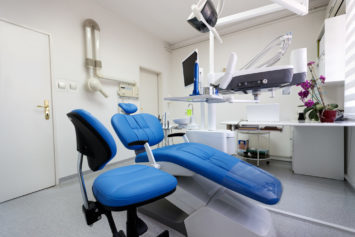On May 11, the Occupational Safety and Health Administration (OSHA) issued an alert for dental practitioners during the COVID-19 pandemic. OSHA alerted employers and workers to increased risk of occupational exposures to the SARS-CoV-2 virus.
The SARS-CoV-2 virus, first identified in Wuhan City, China, in December 2019, causes the COVID-19 respiratory disease.
The agency recommended that dental practices take steps to protect employees, including:
- Encourage workers to stay home if sick.
- Maximize the use of telemedicine for nonemergency consultations, and prioritize urgent and emergency procedures.
- Install physical barriers or partitions between patient treatment areas.
- Provide adequate ventilation and airflow in patient treatment areas so that air moves away from staff work areas.
- Frequently clean and disinfect surfaces and equipment with hospital-grade products on the EPA’s List N of disinfectants for use against SARS-CoV-2.
- Minimize the number of staff present when aerosol-generating procedures are performed, and ensure staff who are present are appropriately protected.
- Provide appropriate personal protective equipment (PPE), such as eye goggles, face shields, and N95 respirators certified by the National Institute for Occupational Safety and Health (NIOSH), as necessary to protect dental practitioners and support personnel.
- Encourage workers to report any safety and health concerns.
The agency also released supplemental guidance for dental practitioners.
Employees in a dental practice may have different levels of exposure risk, according to OSHA. Those performing administrative duties in nonpublic areas away from other employees have a low risk of exposure. Those providing dental care to well patients that involves no aerosol-generating procedures and those in busy staff areas have a medium risk of exposure.
High-risk work includes entering a room or care area where a patient with a confirmed or suspected case of COVID-19 is present, performing emergency dental care but not aerosol-generating procedures on a patient with a confirmed or suspected case of COVID-19, and performing aerosol-generating procedures on well patients. Very high risks include performing aerosol-generating procedures on confirmed or suspected COVID-19 patients and collecting or handling samples from confirmed or suspected COVID-19 patients.
Standards, Controls
The Bloodborne Pathogens (BBP) standard applies to occupational exposure to human blood and other potentially infectious materials, including saliva in dental procedures. The standard does not specifically apply to occupational exposure to respiratory secretions, but saliva, which is covered by the BBP standard, may contain respiratory secretions. However, SARS-CoV-2 is a recognized hazard covered under the General Duty Clause of the Occupational Safety and Health Act of 1970.
The hierarchy of controls for infection hazards begins with hazard elimination. During the pandemic, dental practices should only see patients needing urgent and emergency procedures.
Engineering controls include easily decontaminated physical barriers or partitions between patient treatment areas. Some offices may be equipped with local exhaust ventilation that can capture and remove mists or aerosols generated during dental care.
Administrative controls include teledentistry for nonemergency dental consultations and telephone triage to identify dental issues requiring urgent or emergency care.
Dental practices should train or retrain employees in safe work protocols and provide appropriate PPE.
OSHA’s PPE recommendations include:
- Work clothing such as scrubs and lab coats, gloves, eye protection, and (surgical) face masks for dental care of well patients that does not involve aerosol-generating procedures;
- Gloves; gowns; eye protection; and NIOSH-certified, disposable N95 filtering facepiece respirators for dental care of well patients that does involve aerosol-generating procedures; and
- Gloves; gowns; eye protection; and NIOSH-certified, disposable N95 filtering facepiece respirators for dental care of patients with confirmed or suspected cases of COVID-19.
Given ongoing PPE shortages during the pandemic, the Centers for Disease Control and Prevention have developed strategies for optimizing supplies of eye protection, face masks, gowns, and N95 respirators.

